Although required by the Americans with Disabilities Act (ADA) and local and federal building codes, there is no one size fits all solutions for detectable warning surfaces!
The installation of ADA tiles is indented to make public spaces safer and easier to navigate for the visually impaired, and although there may be a variety of different applications, all detectable warning surfaces are designed to serve this purpose.
But when it comes to your project, how do you know which ADA tile to select for the best results?

Surface Applied Truncated Domes
When the ADA became law in the 1990s, many buildings and public areas had to be modified to meet these new regulations, including the installation of ADA detectable warning surfaces. When the ADA was updated again in 2010, any existing public areas that did not meet the previous regulations had to be modified for code compliance.
The easiest, and most cost-effective, solution for adding ADA compliant detectable warning surfaces to existing areas is to install surface applied truncated domes. Installation of these ADA tiles does not require the disruption of the surrounding substrate and requires only a premier adhesive and fasteners to create a long-lasting and durable solution.
Surface applied ADA tiles can be used in any existing, or new, location requiring the installation of ADA tiles, such as stair landings, escalator approaches, parking lots and many more.
Cast in Place Truncated Domes
Ideal for use in new construction, cast in place detectable warning pavers can be installed directly into wet-set concrete during the finishing stages to create a permeant installation between tile and concrete.
Some cast in place ADA tiles offer a replaceability feature, which allows the truncated dome surface to easily be replace, while the installation anchors and concrete remain intact. This is an excellent long-term solution for new construction, especially for high-traffic areas where the ADA tile surface will be subject to heavy wear and tear.
Cast in place ADA tiles can be installed in any location requiring detectable warning surfaces and can be seen most commonly installed on pedestrian crosswalks, vehicular roadways, and transit platforms.
Radius Curve ADA Tiles
Most ADA tiles come in square or rectangular shapes, which can make meeting code compliance difficult in some areas. Radius curve detectable warnings, however, stray from the traditional rectangular shape of ADA tiles in order to easily accommodate those difficult areas, ensuring complete code compliance.
These ADA tiles are not only available as both surface applied and cast in place, to best meet your project needs, but come in a variety of sizes, accommodating for all radii applications.
These curved detectable warning surfaces can be seen most commonly installed on pedestrian crosswalks.
Wayfinding Bars
Used in conjunction with truncated dome tiles, wayfinding bars are another example of detectable warning surfaces that allow the visually impaired to safely navigate public spaces, without the help of others.
Wayfinding bars are used to create a non-visual pathway within a public space and truncated dome tiles anchor each end of the pathway to signify the start or end of the path. Additionally, truncated dome ADA tiles are installed at several key points along the pathway to mark decision points.
Wayfinding bars are available as either cast in place, replaceable cast in place or surface applied configurations. These ADA detectable warning surfaces are commonly installed in large open spaces, such as university campuses and multi-modal transit stations.
As just one aspect of the ADA, there are many ways to implement detectable warning surfaces!
With Access® Tile, you’ll find the ultimate solution in detectable warning systems. Our ADA tiles are industry leading in durability and weather and wear resistance and our line of detectable warning tiles features an innovative, and industry-leading replaceable cast in place tile.
All of our detectable warning tiles are available in a variety of colors and sizes to ensure the ultimate solution for any area requiring the installation of ADA tiles.












